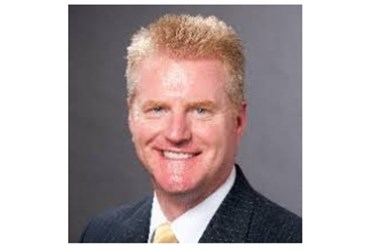Conversation With Clinical Data Consolidation Guru

By Rob Wright, Chief Editor, Life Science Leader
Follow Me On Twitter @RfwrightLSL

By Rob Wright
At a number of shows this past year, I was exposed to some of the issues surrounding data. Many organizations are moving from paper to electronic data capture (EDC) and electronic patient reported outcomes (ePRO) software to improve accuracy and reduce data entry errors. But there is another problem.
Because of the number of software programs used in clinical trials, and because many trials are being conducted on a global basis, consolidation of the data can be cumbersome. That’s why I was delighted to receive a phone call from Rick Morrison, founder and CEO of Comprehend Clinical. Rick was a former Chief Technical Officer for an Internet-based data aggregator. He and his founding partner, Jud Gardner, saw a problem in the market regarding integrating data. They set out to solve the problem by founding their company in 2010.
Start-up Challenges
True innovators and entrepreneurs are the folks who not only see the gaps in the market, they seek to create a solution. In my experience when meeting true innovators, it is rarely about the money, but about the thrill of creating the solution. The passion for solving the problem tends to be the reward., Yet, when done properly, the money tends to follow.
I asked Morrison what were some of the challenges he was facing with launching a new business. Like most start-ups, their biggest challenges were the usual suspects — funding, building a team and meeting compliance requirements. Another common challenge that start-ups experience is finding customers. Rick has combated this challenge by attending a variety of shows, such as DIA, where he gets the opportunity to explain how the company has developed a product aimed at making it very easy to explore and understand data across multiple databases. Having attended a variety of shows, this (i.e. understanding data across multiple databases) is definitely a challenge companies are struggling with on a daily basis. According to Morrison, the application they have developed allows a user to connect databases of different configurations via a “drop and drag” technique. From this they can create high level dashboards, which can be accessed remotely via a variety of devices including the iPad and iPhone. The rationale for developing the product, “Make it as easy as possible for nonprogrammers to understand,” he says.
Future Data Trends
I asked Morrison for his opinion on coming trends regarding data collection and clinical trials. “I think the technology is well positioned right now to start making data manager’s lives and everyone else involved in clinical trials, much easier,” Morrison replies. He sees “real time alerting” and notification of appropriate people of new serious adverse events as being feasible in the very near future.
From Morrison’s perspective, key developments around clinical trials will involve analyzing, visualizing, understanding, and then answering questions around data collection. “In the past 5 to 10 years people have spent a lot of money on various systems,” he says. “I don’t think they have been able to realize the benefit they were hoping for.” He believes technology is getting to the point where, in the next couple of years, a lot of the details will fall into place for people to be able to get clinical data in real or near real time. “Waiting for updates or batches should not be done anymore,” he says. “I think people are going to be finding ways around it.” Morrison has heard a lot of talk about dashboards, portals, and data consolidation programs which will augment and add value to a variety of technologies being adopted throughout industry. That being said, he still sees a variety of roadblocks to true global clinical data consolidation. But it is not coming from the lack of technology, but primarily from the lack of government regulatory agencies who have been struggling with the harmonization of standards for years.
